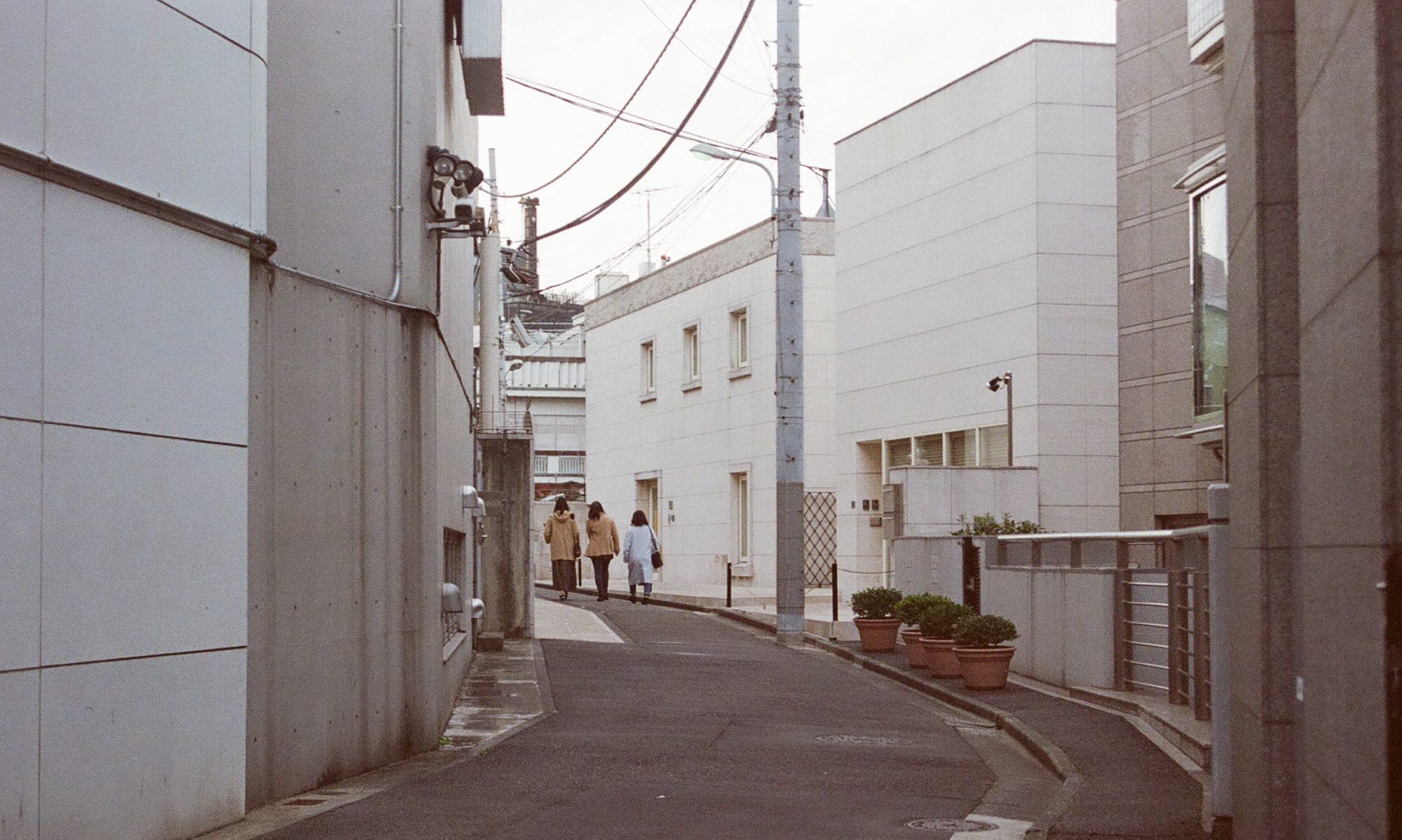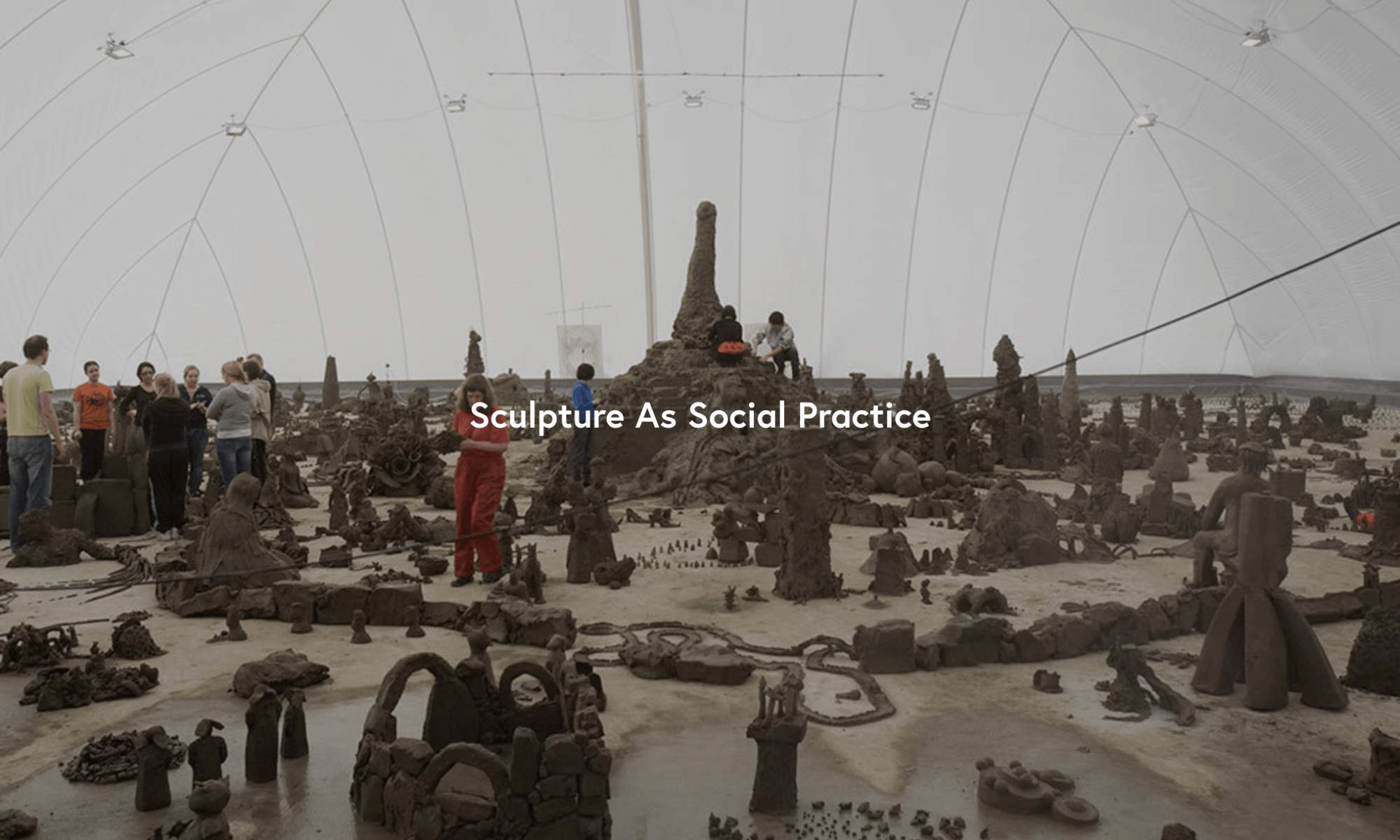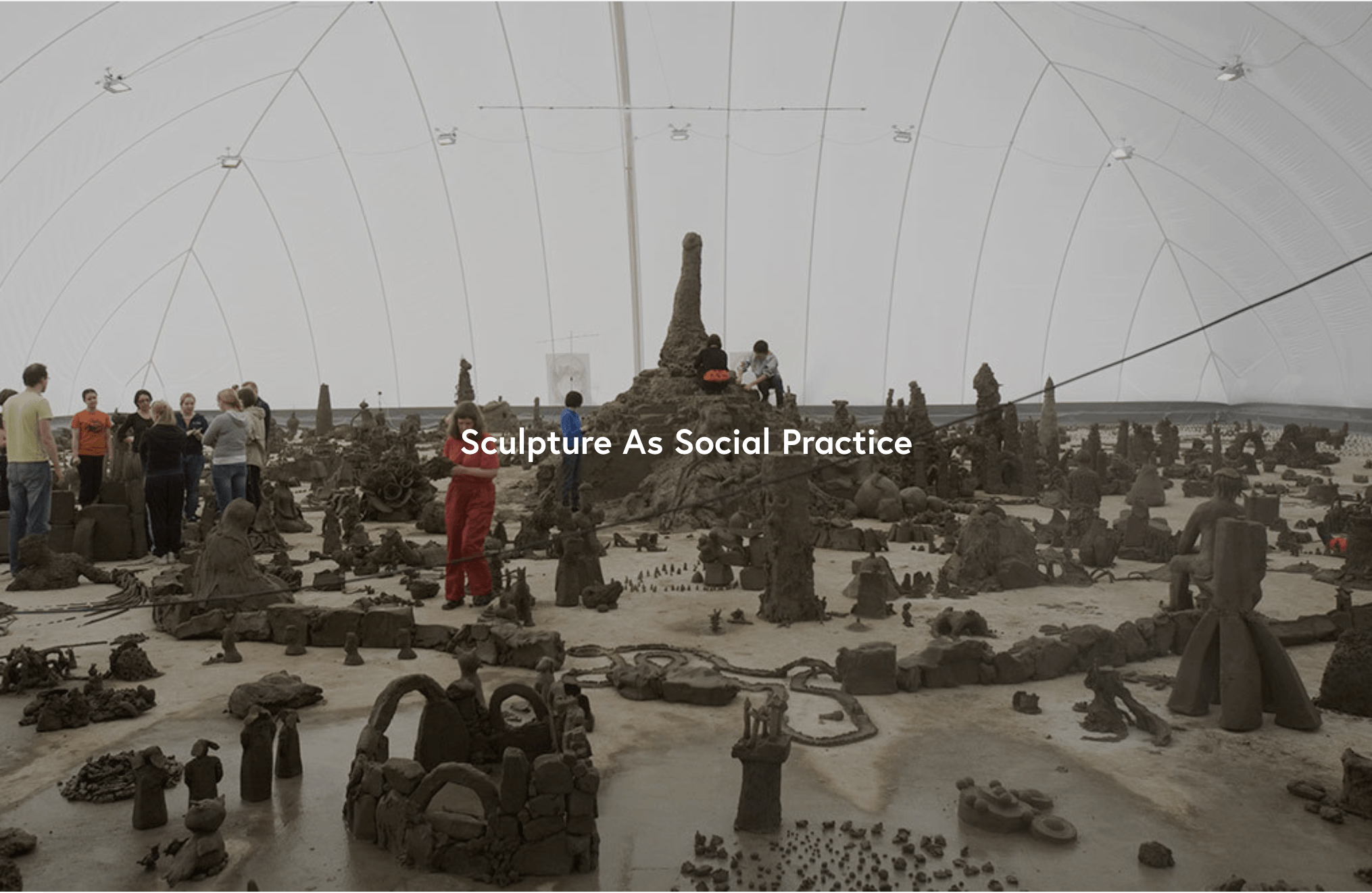
CLAY AND THE COLLECTIVE BODY, 2009
Antony Gormley
Vimeo: http://www.antonygormley.com/projects/item-view/id/277#p32
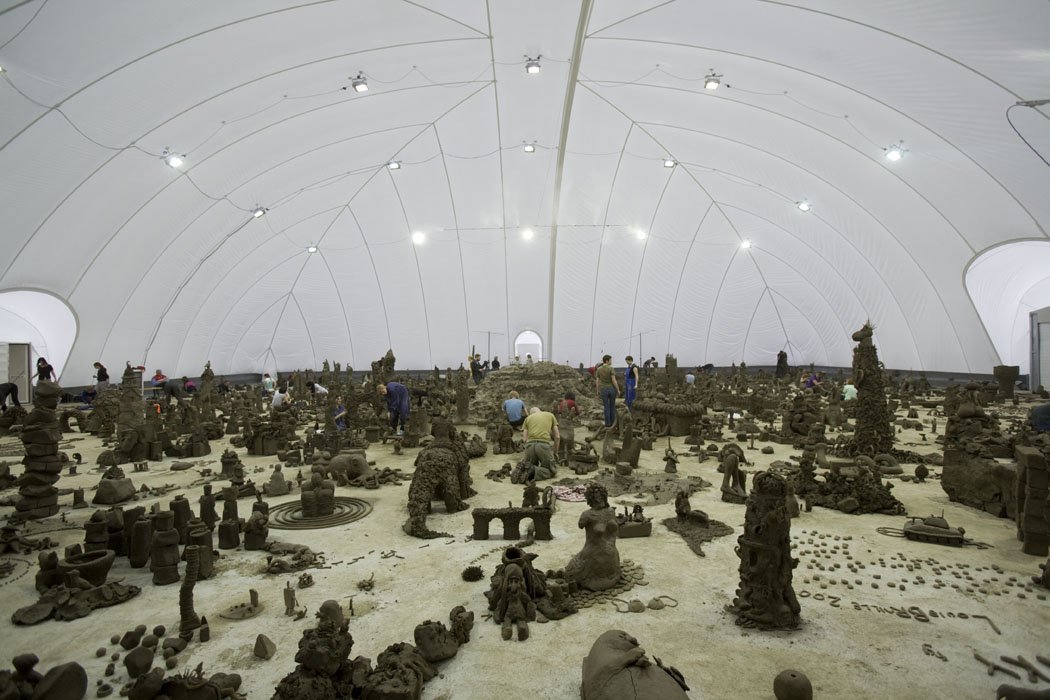
Clay and the Collective Body (2009) was an inaugural IHME project commissioned by the Pro Arte Foundation, Helsinki, Finland. The work began with a giant cube of 100 tonnes of soft clay within a white dome and the citizens of Helsinki were invited to play and sculpt with the material in any manner. There were no inhibitions or restrictions in terms of interactions and forms over the ten days of collective creation. Participants either worked individually or collaboratively with the soft clay creating structures both small and large in a warm, damp and lit interior space.
Clay and the Collective body demonstrates the concept of process as art, as of social practice, where the organised activity or system generates interaction and a collective consciousness. The theory of ‘social sculpture’ was coined by Joseph Beuys, where the role of an artist and ‘social healer’ is inextricable. Everything is art and everyone can make art. The idea of collectiveness and collaboration in Gormley’s work connected art with society, which shifts the role of the artist to the audience. The role of the artist is changed from a producer of physical works to a concocter of social activity with an artistic purpose.
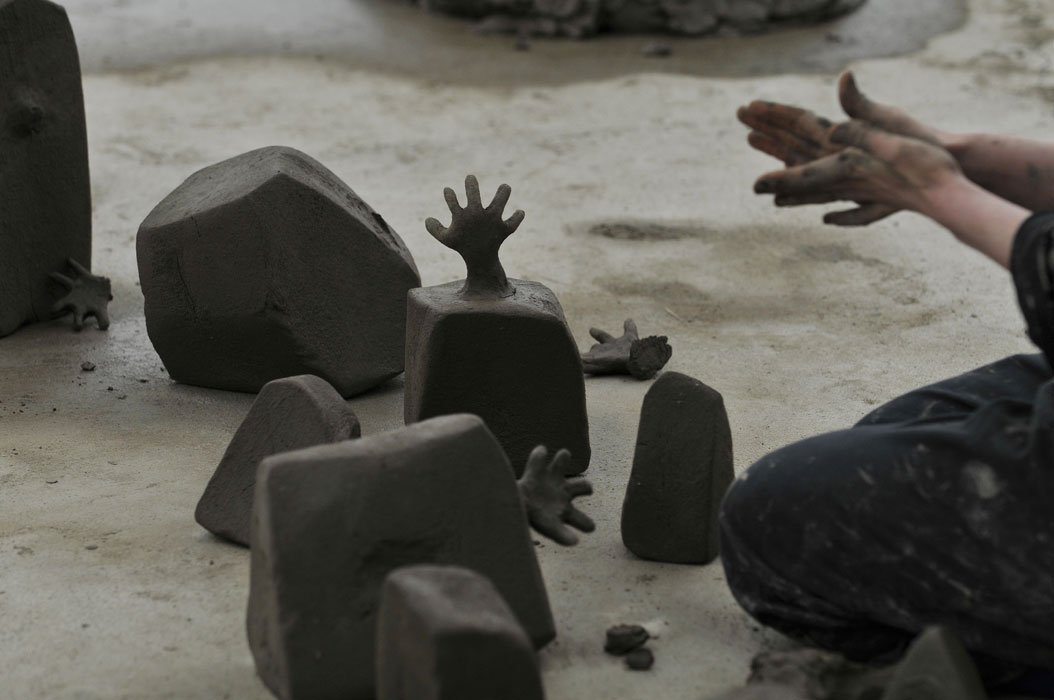
This project also generates a community of ‘makers’, where one gets to be physically involved with the material through touch. The process was primitive and ritualistic, where the makers get down and dirty with a common goal within the time frame and space. Bringing people together in the same space and communicate through interactions and creation was a transcendent experience that brought back the foundations of social and human relationships. Using the primal process as social practice highlighted art’s ability to create a shared collective and the universal understanding of human behaviour.
The process facilitates conversations between the people from various backgrounds within the unified environment. The work produced results beyond the physical sculptures, and of a social nature as well. The ritualistic experience removed capitalistic realities from the space where the only activities to fill the space and the time were creating and interacting. The final exhibition of the created forms were presented as a result of the process.
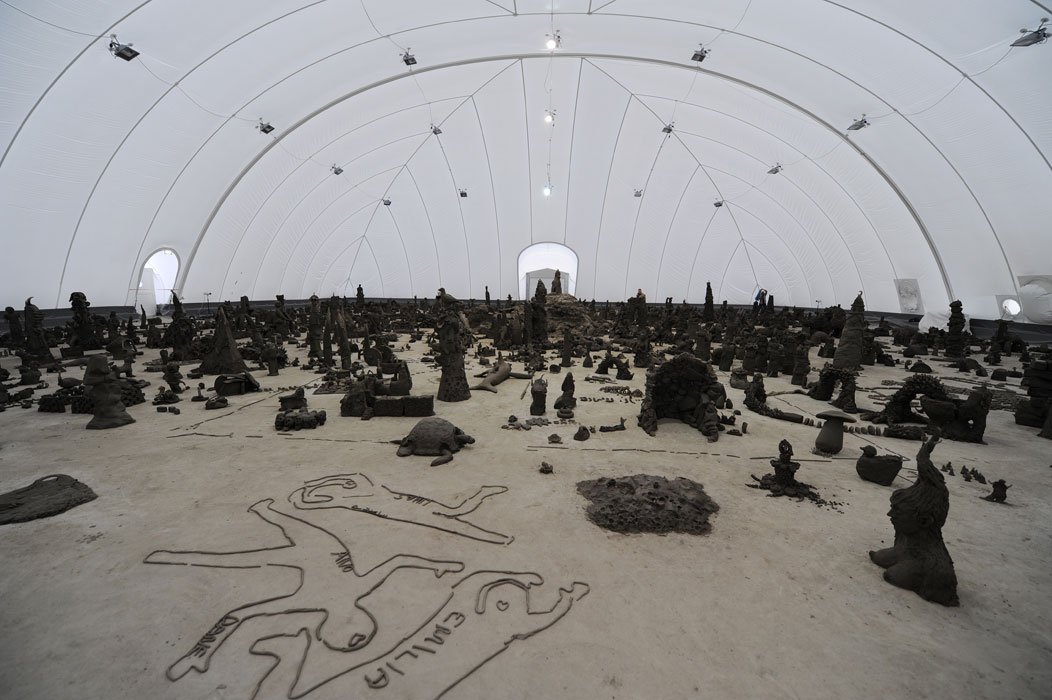
The previous critique by Ben Davis questioned social practice art’s role in activism as compared to real-live social and political movements. Clay and the collective body creates a beautiful balance serving a higher social purpose while being politically neutral, where the collective consciousness is built organically within the time and space. The social practice aspect of this work is ephemeral, which is interesting take on socially engaged art. It raises the question of how time-based social practice art is and does its impact go beyond the people involved and its time frame?
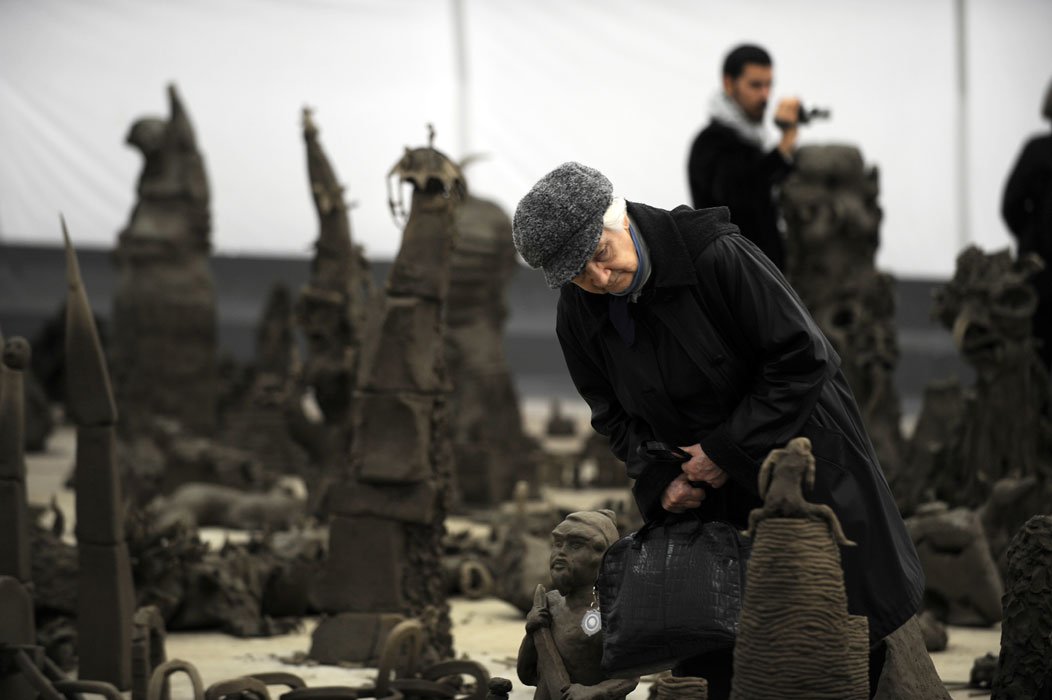
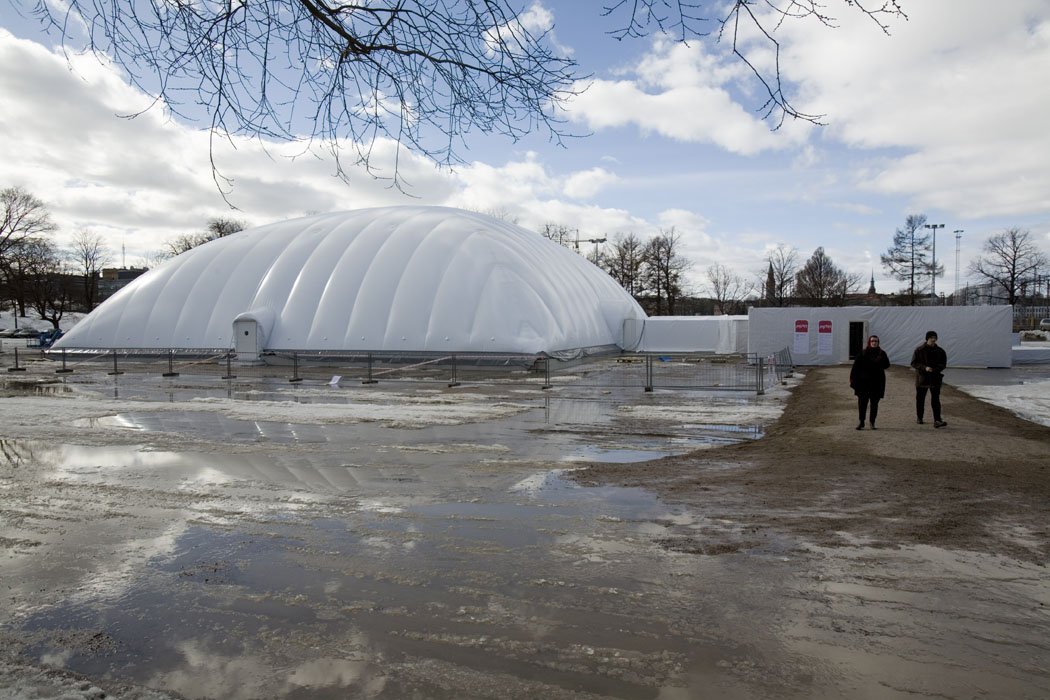
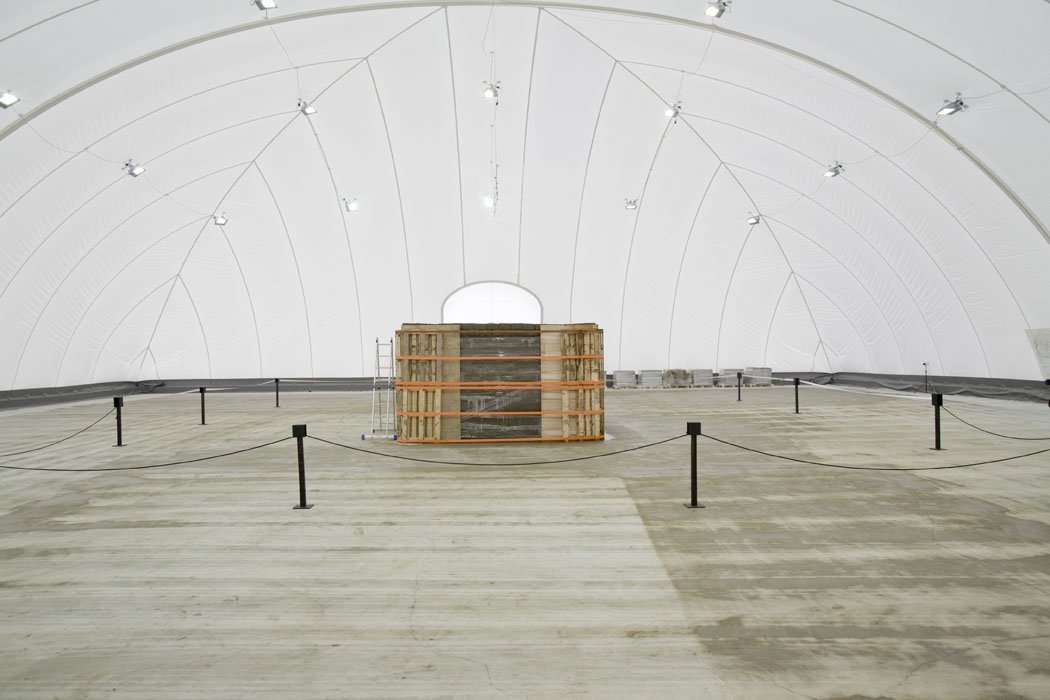
Images from: http://www.antonygormley.com/projects/item-view/id/277#p0
Presentation Slides – https://docs.google.com/presentation/d/18fXTl3wYgvcfOVV64b7D4B-mvenM4ibT03XfmuFFzyc/edit?usp=sharing
